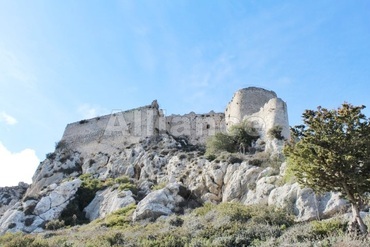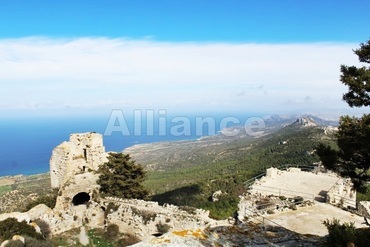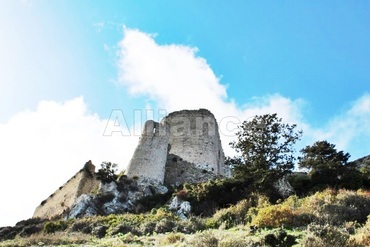Of three castles built on the Kyrenia mountain range, Kantara is the easternmost castle. Kantara Castle is located at an altitude of 630 meters above sea level and has extensive views of the plains Mesaoria plain, Karpaz peninsula and the city of Famagusta. The documented history of Kantara coincides with the history of Bufavento and Hilarion, and it is clear that the castle has witnessed many military operations. It is known that in 1372, the castle was a silent witness to serious battles, when the island was ruled by King James the First, and the Genoese tried to capture Cyprus.

Historians agree that the purpose of the castle was the protection of shoreline from the Arab raids in the 7th century, but the first written mention of the castle Kantara as other mountain fortresses have been found dating back to 1191 in a document describing the reign of Richard the Lionheart in Cyprus. In 1392, by the orders of King James, the castle was further strengthened and broad walls were built around the perimeter of its territory. After the Venetians captured the island, Kantara castle as well as other mountain fortresses Bufavento and St. Hilarion, no longer represented the military and strategic value and were abandoned and partially dismantled. By 1562, the castle was in ruins, and apart from minor restoration work at the castle, nothing has changed and today you can see exactly the same as it was several hundred years ago.
Place to build the castle was chosen very carefully: not only Kantara commands panoramic views of the road leading to the castle, but also the sea, plains and city of Famagusta, making any attempt to attack the castle almost unreal. Even of the castle would be reached any further attack would be an insane idea, due to the castle’s unapproachable and meticulously crafted architecture. Planted upon stiff cliffs, the castle is virtually impregnable, and extra fortification of the entrance further reduced possible forced entry. The entrance to Kantara lies through east, the cliffs on the north and west make it impossible to approach the fortress.

The barbican, flanked by a pair of square towers, leads into a large bailey, an area between the outer and the main wall. Piercing the wall is the inner entrance, which is located a little higher, and again guarded by two towers.
Turning to the right, the northeast tower comes to view, which is located a bit out from the rest of the castle walls, which generates an ideal position to observe the northern coast of the island. At the first level of the castle there is a square room, passage through which leads to a horseshoe-shaped tower, with slits on three sides in the walls, made specially for sheltered shooting. On the roof of the tower is a parapet with loophole. Left from the entrance there the southeast tower that has vaulted cellar, which was first used as a prison, but later converted into a cistern for storing rainwater. Close by located the premises where soldiers lived, and in the next room the medieval latrines. The difference can be noticed between the Roman and Venetian restrooms. In Kantara they are basically holes in the wall, while in Salamis, Roman closets consisted of marble seats with armrests, and continuously flushed with running water.

Continuing the tour in the southwest, the remains of the south wall can be seen, a few towers and cisterns. In the most southern point there is small gate that residents used in emergency situations.
From the South Gate steep road leads to the highest point of the castle and the remains of another tower, in which soldiers were continuously on duty, watching perhaps approaching enemies. Noting the danger patrol exchanged messages in the form of light signals with the soldiers guarding castles Bufavento and St. Hilarion.
VIDEO





